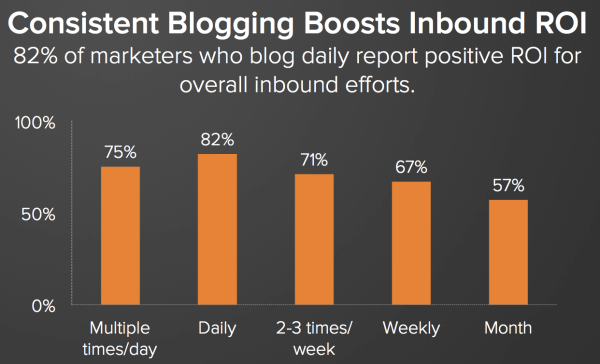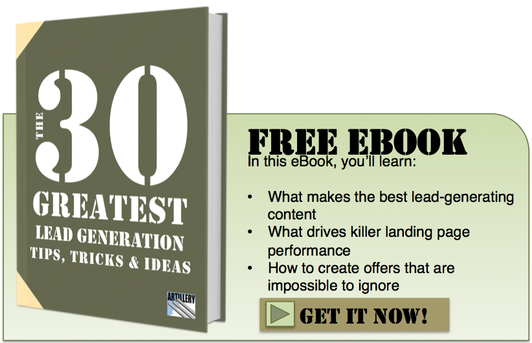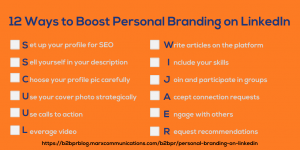
More companies are beginning to understand that blogging can be the key to getting found online, converting visitors to leads, nurturing those leads to sales and delighting customers.
However, just having a blog is not enough. That is like an unlit fuse.
So while there are a growing number of companies with blogs, many tend to be about their company. The articles might be about new hires, awards, company picnics, contract wins, etc. And while that kind of information is appropriate to include on a website, it’s not going to generate many leads. In fact, it’s not even going to get much traffic.
To generate leads, a business blog needs to have remarkable content that prospective customers will love and share on social media. And that kind of content is crucial for generating inbound links to your site that can dramatically improve your search engine rankings.
“Google only loves you when everyone else loves you first.” ~Wendy Piersall
Here are the five “must-haves” to to set your company blog on fire and start generating more traffic, leads and customers:
1. A Buyer Persona Focus
Buyer personas are archetypes of your ideal buyer. According to Adele Revella of Buyer Persona Institute, “Buyer personas are examples of the real buyers who influence or make decisions about the products, services or solutions you market.”
Your blog is an opportunity to educate your buyers at the beginning of their journey. The more that you are able to write about what is interesting or helpful to your buyer persona, the more successful your blog will be.
Blog about what their typical questions and challenges are and you’ll be on your way to having an effective lead generation blog to which your buyer personas will return repeatedly.
2. One Topic Per Post
Focusing on one topic per blog post helps to clearly and concisely address your buyer persona’s problem. One topic per post also helps with search engine optimization (SEO) by better enabling the search engines to know precisely what the post is about, particularly as it relates to keywords.
And while you should always write for searchers first and search engines section, there are a few key things to remember to keep both happy:
- Include your blog post topic keywords in your post title.
- Try to keep your blog post titles to 55 characters or less. If you go over, it’s OK, but try to put the keywords in the first 55 characters.
- Include meta descriptions. These are the snippet of information that appears below the link of a search result. While these are largely ignored by the search engines, they are read by the searcher deciding whether to click on the results or not. Keep meta descriptions under 140 characters.
- Include image file names and Alt tags. Search engines can’t read images so you need to tell them what the image is.
- Include links and anchor text. Link to other parts of your website if that would strengthen the reader’s experience. The anchor text you include in the link indicates to the search engines what the linked information is about.
- Focus on mobile. About half of all Internet searches are now on mobile devices. The search engines want their users to have a good experience while searching, so they are giving preference to mobile-optimized sites.
3. Consistency And Frequency
The people searching for the answers you’re providing (and the search engines) reward consistency and frequency. As the attached chart from HubSpot’s State of Inbound Marketing report indicates, frequent and consistent blogging pays bid dividends.

4. Formatting And Imagery
This is yet another reason why your blogging should focus more on the searcher than the search engine. The proper use of formatting and imagery makes your blog more visually digestible for the reader.
If your blog is not reader-friendly and inviting, you won’t draw your reader’s attention and keep them there. And you won’t likely get them to return.
In terms of blog length, make sure the blog post is as long as it needs to be and addresses the questions your visitor might have.
Other formatting must-haves include:
- Bolded text
- Subheads, numbers and bulleted lists (like this one)
- Embrace whitespace
- Use high-quality images
5. Lead Conversion Opportunities
You want to generate leads, right? So make sure to take every lead generation shot you can. Think of the blog post as the first step in the buyer’s journey of researching their problem. Then, give the reader the opportunity to take the next logical step.
For instance, this post is about improving your lead generation opportunities from blogging, so a call-to-action for an eBook about lead generation is included right here as well as at the CTA at the end of the post.
If a CTA about social media were included at the end of this post, that would not be the optimal lead conversion opportunity.
Your blog has lots of prime real estate, so make sure to include CTA buttons in the side bar and at the end of the post, as well as in-text links. Just make sure the offers are as closely connected to the topic as possible in order to increase the relevancy and conversions.
photo credit: marfis75 via photopin cc 
Business Articles | Business 2 Community
(330)










